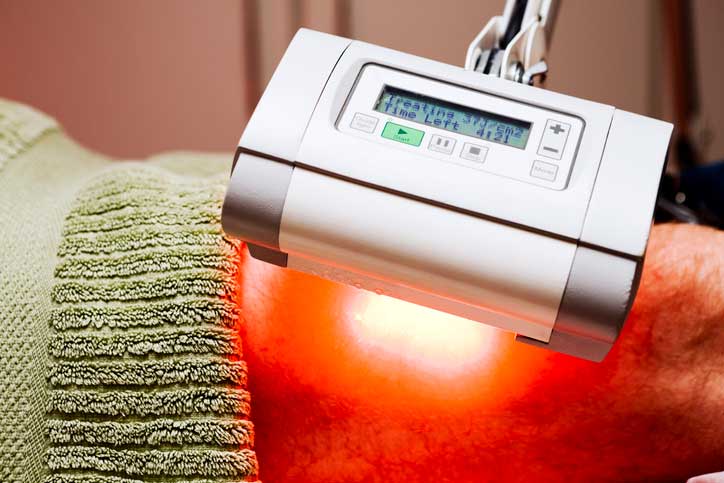Options for Treating Skin Cancer Without Surgery

If you have been diagnosed with pre-cancer, basal cell carcinoma, or squamous cell carcinoma, you may have options for treating your skin cancer without surgery. Explore the options below and ask our Salt Lake City dermatologist for advice about which one may be best for you.
Cryotherapy
This therapy treats pre-cancerous conditions, including actinic keratoses (AKs). It involves freezing and killing tumorous cells with liquid nitrogen. Cryotherapy usually takes several office visits to complete.
Once the skin surrounding the treatment area thaws, expect a bit of swelling, blistering, and crusting. The wound may take 30 days or more to fully heal, possibly draining fluid during this time. Be aware that cryotherapy leaves a scar where the pre-cancer cells once were, and the area may have less pigment following treatment.
Photodynamic Therapy (PDT)
A PDT treatment called BLU-U can treat everything from acne to skin cancer. First, a topical formulation called Levulan is applied to target AKs, pre-cancerous lesions, and early-stage carcinomas. Then, exposure to a special blue light causes a biochemical reaction between the topical product and the skin, increasing the turnover of healthy skin cells to restore the damaged area to a healthy, cancer-free state.
Be aware that temporary redness and swelling may occur. Patients must also avoid direct sunlight for several days following treatment.
Topical Chemotherapy
The purpose of chemotherapy is to kill cancer cells using drugs. Topical chemotherapy involves applying the anti-cancer medication directly to the skin once or twice a day for up to several weeks. This differs from traditional chemotherapy, which is taken orally or intravenously.
Topical chemotherapy prevents the drugs from spreading throughout the body, reducing the associated side effects. However, topical treatment only works if the tumor cells are located on or near the surface of the skin. Therefore, it can only be used to fight skin growths, including AKs and some basal and squamous cell carcinomas.
Immune Response Modifiers
The purpose of these drugs is to boost the body’s immune system, helping it fight off cancer more effectively. Immune response modifiers come in a cream form, which can be applied to AKs and early basal cell cancers. An injectable form is also available to boost the immune response against tumors that aren’t located directly on the skin. Rashes and flu-like symptoms are the most common side effects.
Laser Surgery
This treatment is labeled a “surgery” because it targets and destroys body tissue, but laser treatment doesn’t involve cutting into your skin with scalpels. Instead, it works by vaporizing AKs and some types of basal and squamous cell carcinomas with laser beams.
Chemical Peels
This therapy ranges from mild salon-type treatment for cosmetic purposes to deeply penetrating procedures that can treat AKs. Chemical peels involve applying a product to the skin, such as trichloroacetic acid (TCA), which kills cancerous cells after several days.
If any of these non-surgical skin cancer treatments interest you, please contact Swinyer-Woseth Dermatology online or call 801-266-8841 to speak with a board-certified dermatologist in Salt Lake City.
_________________________________
Swinyer-Woseth Dermatology – https://www.dwoseth.com/
Salt Lake City, UT
801-266-8841_________________________________
https://www.cancer.org/cancer/basal-and-squamous-cell-skin-cancer/treating/other-than-surgery.html
